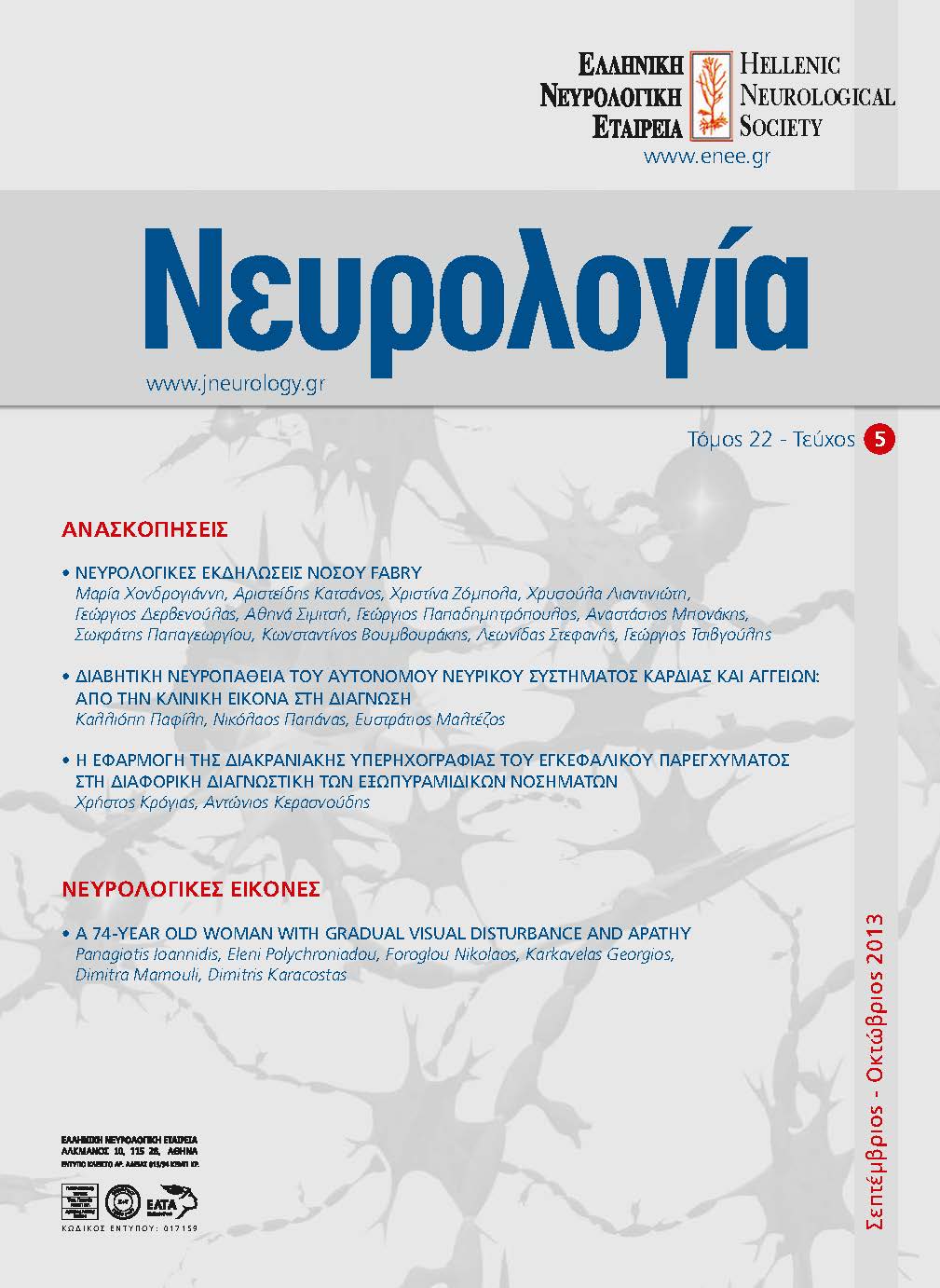Neurological manifestations of Fabry Disease
Keywords:
Fabry disease, Anderson Fabry disease, enzyme replacement therapyAbstract
Fabry disease is a multisystem disorder that belongs to lysosomal storage diseases, and is inherited in an
X-linked manner. It is characterized by total or partial deficiency of the enzyme alpha-galactosidase A (a-Gal
A), and phenotypic variability, with differences in the age of onset, severity or latency in the diagnosis
among patients. The main clinical manifestations include: 1. the peripheral nervous system (neuropathic
pain - painful neuropathy, autonomic nervous system disorders, decreased hot - cold sensation, axonal neuropathy, carpal tunnel syndrome), 2.the central nervous system (stroke, depression, seizures), 3.
cardiovascular system (disorders in the myocardium, conduction system and valves), 4. urinary system
(proteinuria and renal failure), 5.the eyes (cornea verticillata, retinal vessel tortuosity, cataract), 6.the skin
(angiokeratoma, telangiectasia,lymphedema ) and 7. the ear (sensorineural hearing impairment, tinnitus,
vertigo). The diagnosis may be delayed up to 20 years, partly due to the rarity of the disease and because
of other incorrect diagnoses during childhood. In hemizygotes males (presence of mutation in GLA gene of
the single X chromosome of male individuals) the activity of a-Gal A in serum or peripheral leukocytes can
reliably establish the diagnosis, but in women DNA testing is needed to detect the pathogenic mutation
associated with Fabry phenotype. Imaging of brain parenchyma by MRI may also assist in the diagnosis
(“pulvinar sign” in T1 sequences), while magnetic brain angiography can identify dolichoectasia and
serpentine formations in the vertebrobasilar system. Life expectancy before enzyme replacement therapy
(ERT) and kidney transplantation was 41-50 years. The available authorised ERTs appear to be safe and
have been shown to reduce cardiological manifestations, improve renal function, hearing loss, skin lesions
and symptoms of peripheral neuropathy. Finally, although the ERTs have no established efficacy in primary
stroke prevention, they delay or prevent cardiac and renal complications that are independent risk factors
for first-ever and recurrent cerebrovascular events. Consequently, they are currently recommended in the
treatment of Fabry patients with TIA or cerebral infarction in terms of secondary stroke prevention.


